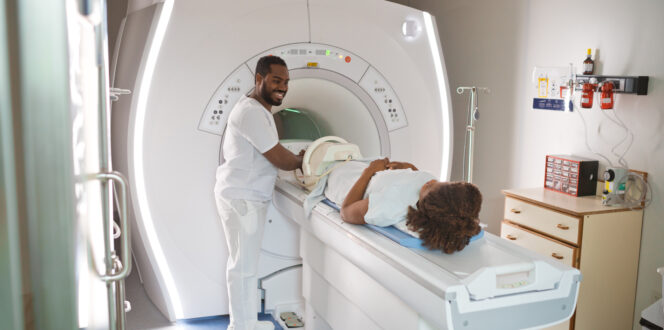A radiologist’s guide to getting an ultrasound

Dr. Ania Kielar, vice-president of the Canadian Association of Radiologists and vice-chair of the University of Toronto’s department of medical imaging, explains what an ultrasound is and why it can be a safer option than an X-ray or CT scan.
What is an ultrasound?
An ultrasound is a procedure that uses high-frequency soundwaves to produce images of the inner workings of the body. The device that produces these soundwaves, called a probe, usually remains outside the body but certain procedures require it to be used internally. “The probe emits these high pitched sounds that we can’t hear and they bounce off of various organs inside of us before returning to the probe,” Dr. Kielar says. “This information is used to create the images.”
What does an ultrasound show?
An ultrasound is a good first test because the procedure does not use radiation to produce its images. It is ideal for viewing soft tissue, such as joint inflammation, or for monitoring the uterus, ovaries and health of developing babies. “The abdomen is its most common use,” Dr. Kielar says. “We’re able to see all the different organs. We can use it If you have acute problems, such as appendicitis, rather than using a CT scan. It’s a very good first test if somebody is reasonably thin — under 200 pounds. The larger somebody is from front to back or side to side, the more the sound gets attenuated. It gets lost in there.”
How long does an ultrasound take?
If you’re wondering how long an ultrasound typically takes, it can vary depending on the body part being imaged. The duration of the test can vary depending on the body part being imaged. “It takes about 45 minutes if you’re doing an abdominal ultrasound,” Dr. Kielar says. “If it’s a wrist or an ankle or a knee, that’s a little bit shorter and can be around 20 minutes.”
How can patients prepare for an ultrasound?
For certain types of ultrasounds, patients may be asked to refrain from eating prior to the procedure. For others, they may be asked to arrive with a full bladder to allow for better imaging. Your doctor will provide instructions ahead of time. If they are performing a prenatal ultrasound for pregnancy or obstetrical ultrasound, they will need to know if you are pregnant or not. “We also have different kinds of probes,” Dr. Kielar says. “One of them is called a transvaginal probe that we actually put up the vagina and women need to be prepared for that. This allows us to see the ovaries and uterus much better for certain indications. The closer you can be to a structure the better you can see it. Transvaginal is excellent for looking inside pelvic structures.”
Is there anything patients should do after an ultrasound?
Patients should be able to go about their day immediately following the procedure.
Are there any concerns or risks that accompany an ultrasound?
There are no known risks.
How long does it take for results to come back?
Usually, two three days but it can take up to five days.
Has the pandemic changed the way ultrasounds are performed?
The length of the procedure and the implementation of certain restrictions have increased the amount of time patients must wait. “To do an ultrasound you have a technologist right beside you for 45 minutes.” Dr. Kielar says. “We’re only able to do urgent ones and only specific procedures because we’ve had to cut down a lot. Wait times have gone up.”
Published: April 26, 2022
Trusted by more than 800+ hospitals and clinics.



















